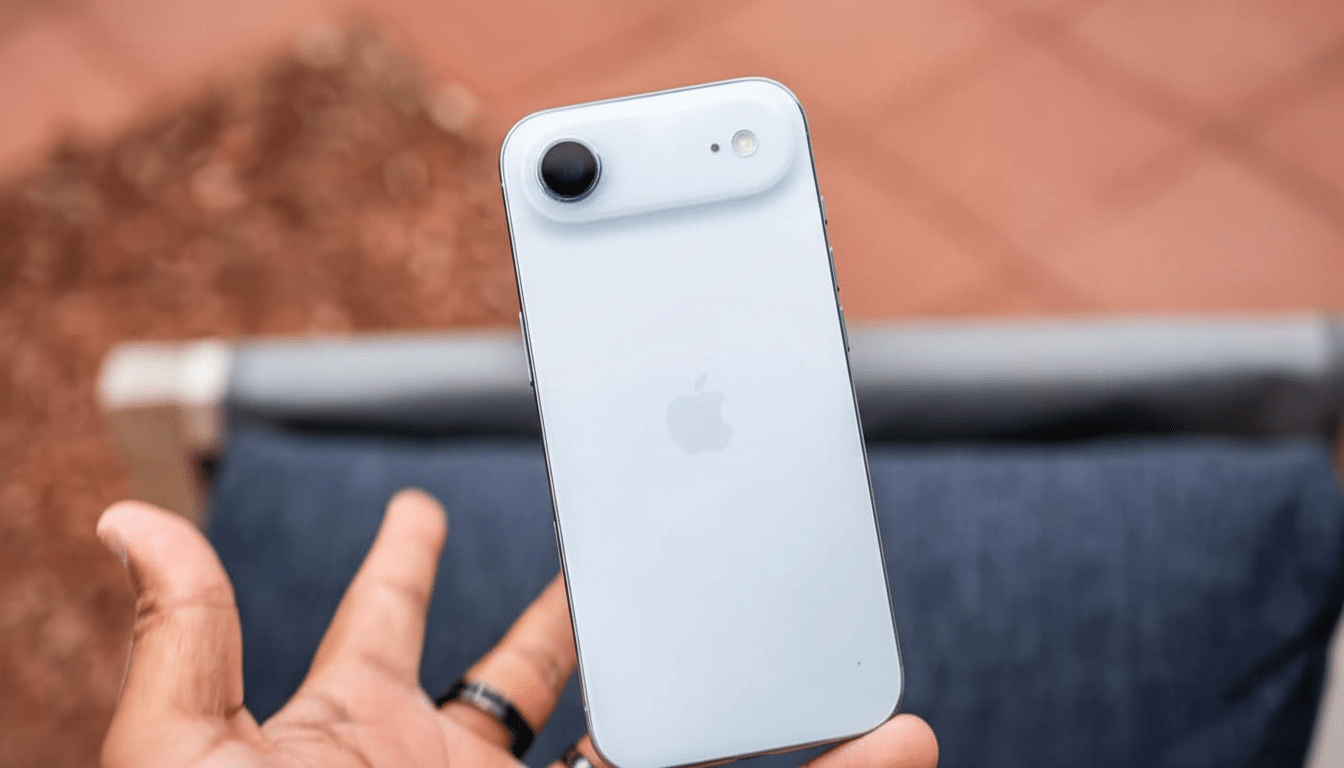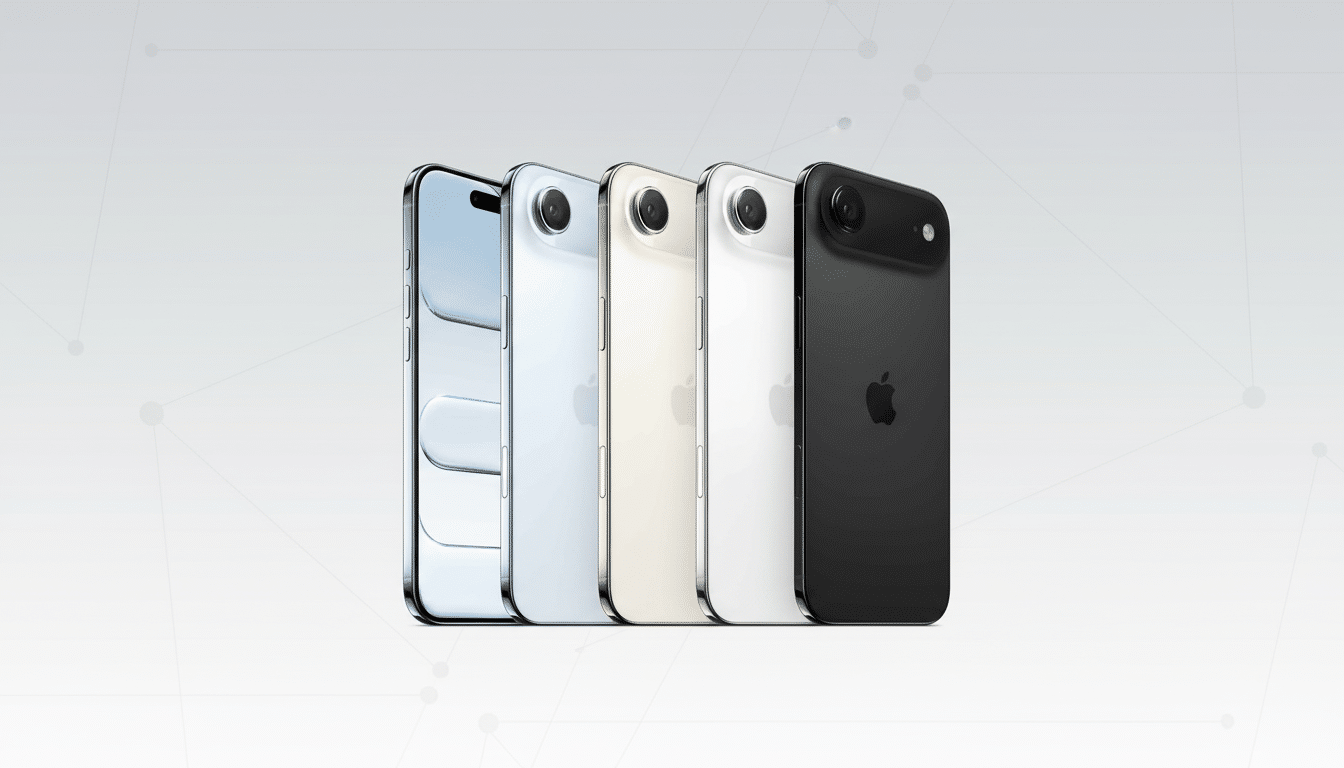Apple’s new iPhone lineup is official with a new silhouette taking center stage: the iPhone Air. As the Plus model replacement, the Air repositions Apple’s mass-market flagship play around thinness, efficiency, and modern connectivity, while the iPhone 17 and 17 Pro models iteratively improve performance, cameras, and thermals.
iPhone Air: Thinner, by intention, bigger, with ambition
At 5.6mm, the iPhone Air is very thin—a more than 25% reduction in thickness from last year’s non-Pro flagships—but holds onto a large 6.5-inch screen with Apple’s ProMotion variable refresh rate of 1Hz to 120Hz. The combination of a near-tablet-grade canvas with wafer-thin thickness is the idea: Apple wants an everyday phone that feels like it’s not there, without sacrificing capability.

Powering the Pro A19 is a 6-core CPU and 5-core GPU, as well as Apple’s new N1 wireless chip with support for Wi‑Fi 7, Bluetooth 6, and Thread for your smart-home accessories. Apple also puts its C1X modem inside the Air, and goes eSIM-only worldwide to liberate some internals — a ballsy move that aligns with GSMA Intelligence’s longstanding prediction that eSIM eventually becomes standard across all premium phones everywhere.
Despite the profile, Apple says you should get up to 27 hours of video playback, which is helped by that 1Hz refresh rate and silicon efficiencies. The titanium chassis is back, as is the Action Button with Camera Control. There’s just a single rear camera, but Apple relies on computational image fusion: a 48MP main “Fusion” camera intended to simulate multiple focal lengths, along with an 18MP Center Stage front camera. A new square selfie sensor is supposed to provide a wider angle of view for group pictures and vertical video.
The iPhone Air is available to order starting at $999 for the 256GB model and also comes in 512GB and 1TB versions. Colour options are space black, cloud white, light gold and sky blue.
Pro models swivel to cooling, extend for more runtime
Apple’s iPhone 17 Pro and Pro Max move from titanium to aluminum and include an internal vapor chamber. The titanium version from last year looked on paper to aid in heat dissipation slightly, but running scoresheet after scoresheet from a benchmark still resulted in warm to hot surfaces under load. A return to aluminum, when paired with a good vapor chamber, means Apple is going to be pushing for stable performance over longer tasks — you’re shooting 4K or you’re playing a graphics-intensive game, for example. The third-party stress tests, such as UL Solutions’ 3DMark, will be the true test, but the design intent is obvious.
Both Pros also have the A19 Pro with a 6-core CPU and 6-core GPU, ship with the N1 wireless chip, and stick with Apple’s ProMotion to 120Hz and an always-on display. It can get up to 3,000 nits bright outside. Sizes are as they are known at 6.3 inches and 6.9 inches. Apple also now offers Ceramic Shield protection on the back glass for the first time, which should help with a common pain point of drop damage.
Imaging receives a significant upgrade: the telephoto sensor rises to 48MP in a 48MP Pro Fusion system (main, ultra wide, telephoto), allowing for up to 8x optical zoom at a 200mm equivalent. The 18MP Center Stage front camera remains, and offers automatically adjusting framing. Battery claims increase to up to 39 hours of video playback — a little more on which below — which can be put down to the slightly bulkier back “plateau” mount and eSIM efficiency.

iPhone 17 Pro starts at $1,099, and the Pro Max at $1,199 (both with 256GB), available in 512GB, 1TB, and a new 2TB option. For finishes, there is deep blue, silver and cosmic orange.
iPhone 17: The mainstream takes a few Pro cues
The base iPhone 17 scales to 6.3 inches and adds ProMotion and an always-on display — features that once introduced the Apple high-end. It’s powered by the A19 and the N1 wireless chip, has eSIM on board, and has an aluminum frame. Apple advertises that the new iPod touch gets up to 30 hours of video playback, an increase over the previous generation.
The 48MP Dual Fusion rear system get up to 2x optical zoom while the 18MP Center Stage front camera follows the same wider, square sensor lead as the Air. The iPhone 17 is available starting at $799 for 256GB in lavender, mist blue, sage, white and black.
What Air does for Apple’s lineup
Retiring the Plus in favor of the Air suggests a strategic reset. Industry tracking from Counterpoint Research has indicated that consumers are increasingly attracted to thinner, lighter premium devices, despite little significant change in average screen size. The Air hits that sweet spot with a large screen, modern I/O, and a premium build — but without the Pro’s camera stack, or price inflation.
Going eSIM-only all over the world shows just how long Apple’s game really is: Make the hardware simpler, take back inside space, and move more and more features into software. That the N1 has thread support speaks volumes, too. By creating a thin phone that is a better smart-home citizen, Apple further links the iPhone to Home-compatible accessories, a market that has been growing steadily according to data from CSA and market analysts.
Early takeaway
On paper, the iPhone Air is the most fascinating of Apple’s new trio: super-thin, current-gen wireless, and strong battery claims that belie its dimensions.
The Pros should satisfy power users with cooler sustained performance, brighter screens and a true telephoto upgrade. But the Air is the statement piece — an accessible flagship that reframes what “thin and capable” might look like in such an overpowered 2025 smartphone market.

